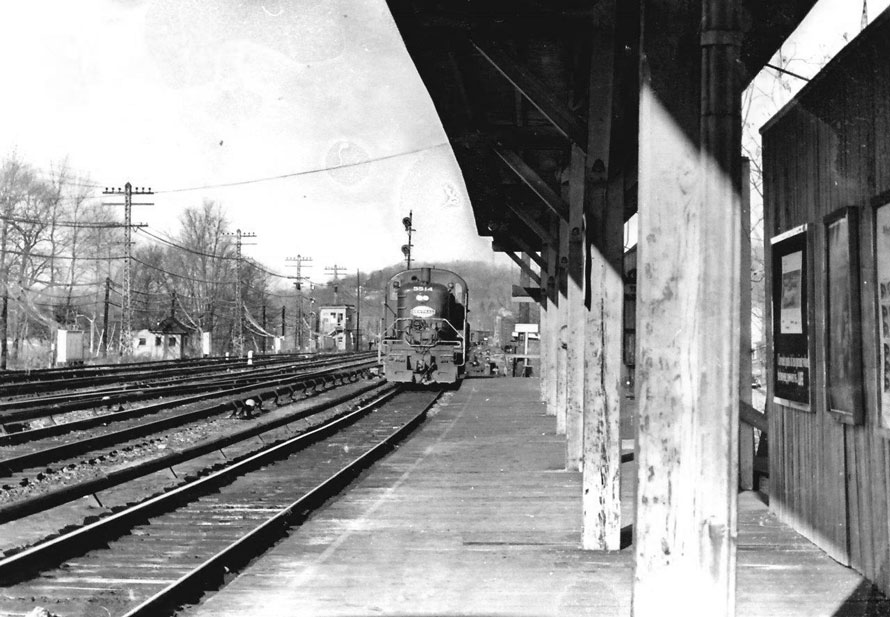
By the mid 1960s, my father was still working a “relief” job. This meant OW on Mondays, JO on Tuesday and Wednesday, and NW on Thursday and Friday. For several years the railroad was short on towermen, and my dad worked his days off at NW. Saturday was my big day to go with him. My dad was always a good relief and came in early—most men were. Jim Donahue was the day man and was ready to leave after we showed up and he let my dad know if anything was not normal. That meant with the interlocking machine as well as trains not running in their normal order.
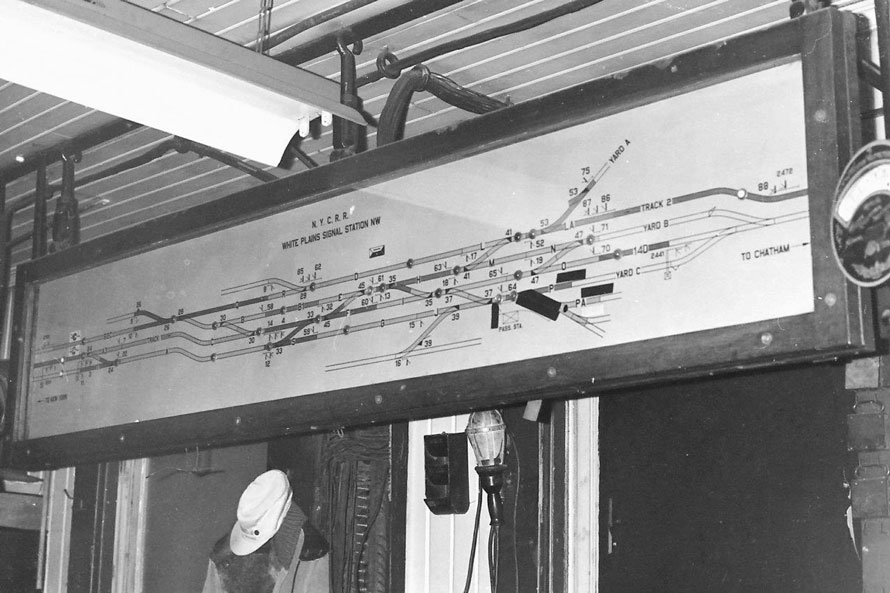
Back in those days we had one train per hour going west to Brewster and one eastbound. Both had to change power, and you would not want to line the local from Grand Central Terminal (GCT) toward Yard A. The electric motors were all stored and serviced at the motor shop in yard A. A diesel had to come from the engine house in Yard C for the change of power move. So the local would come in from GCT, discharge its passengers, and go into Yard C, and the diesel would come out and sit in the “pocket” in front of NW. When the train for Brewster came into Holland Avenue station, the car knockers would cut off the motor and sometimes a few cars from the head end, and after they cleared the 33 switch, the diesel would get the jack and proceed east and tie onto the train, get a brake test and go west.
For east-bounds from Brewster, about ten minutes before their arrival the motor would come out of Yard A and go into 29 pocket just east of the tower. When the train came into the station, the car knockers would cut off the diesels and they would go east and back across the plant into Yard C to get serviced. The motor and sometimes additional coaches would back out of 29 pocket, tie onto the train, get a brake test and go east to GCT. A few minutes later the local would come out of Yard C, pick up local passengers, and head for GCT.
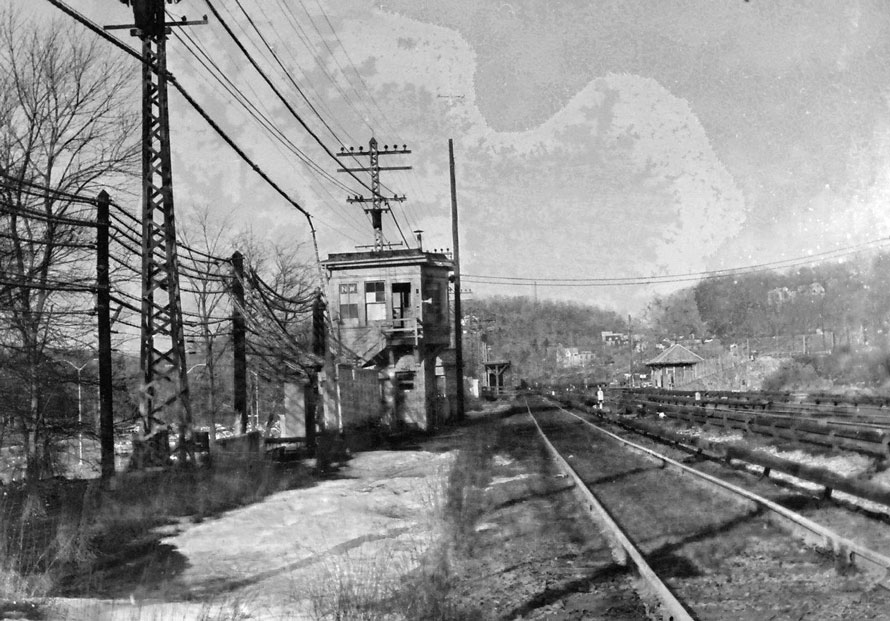
Between the through trains to and from Brewster, a local would come in from GCT and one would go east to GCT. Starting around 6 p.m., service to and from Brewster would be every two hours, and that’s when our small grill would come out. I fired it up and we would have a fresh grilled Hamburger and always fried onions and saltine crackers—never a roll! To go with our dinner, I would have tea and my dad would drink his coffee. After everything was cleaned up and put away, out came the TV. We watched Laurence Welk, The Honeymooners, and a movie. At 11p.m. the TV was put away and we would wait for dad’s relief.
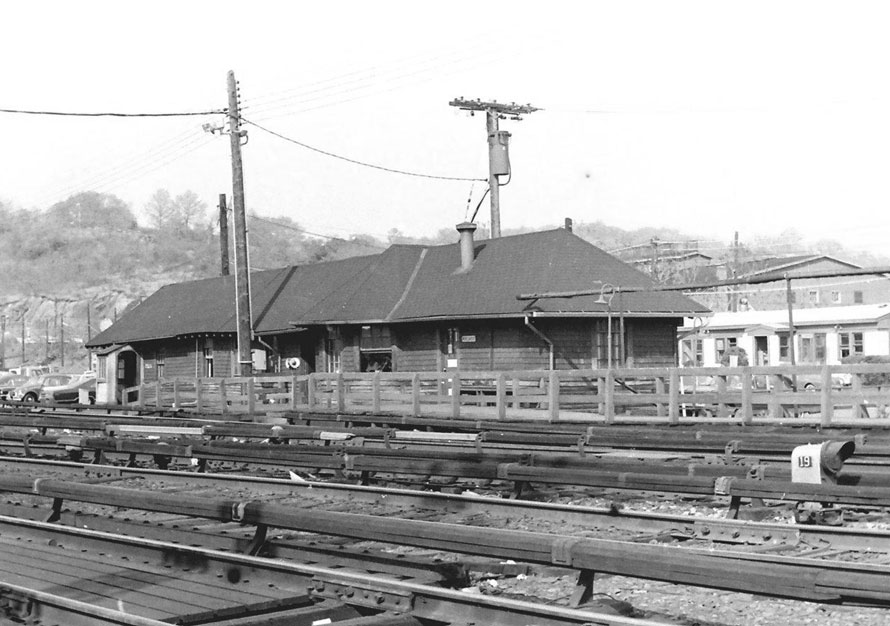
Some other things were always going on during my dad’s tour also. The yard master changed shifts at 4 p.m., so the new yardmaster would give my dad his line-up as to what tracks in Yard C to put the locals on that came in as well as the ones that left. This was based on how many cars were coming and going. Sometimes, if the car wash in Brewster was not working, they would run very large extras to North White. My dad hated this move as it took quite a while to make, and it tied everything up. You wash cars at 1 mph, so this train would come down and have to back across the interlocking. No radios in those days! So in between trains the plant was tied up as was Yard C. After shoving through and clearing up, trains would come and go, changing power, and then this drag would come out, run around the train, and go west back to Brewster. As I recall, this move took two hours and keeping the regular trains on time was a challenge for everyone. My dad often said he liked his job because it was never the same every day. This was because of this type of move, or because of late or disabled trains. You were always thinking.
They knew me well and treated me as if I was running the place, but everyone knew that my father was sitting there watching every move I made.
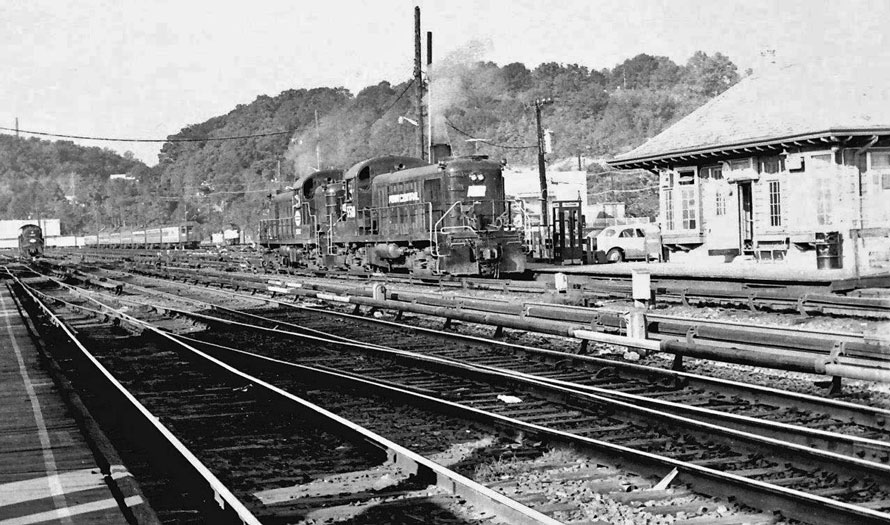
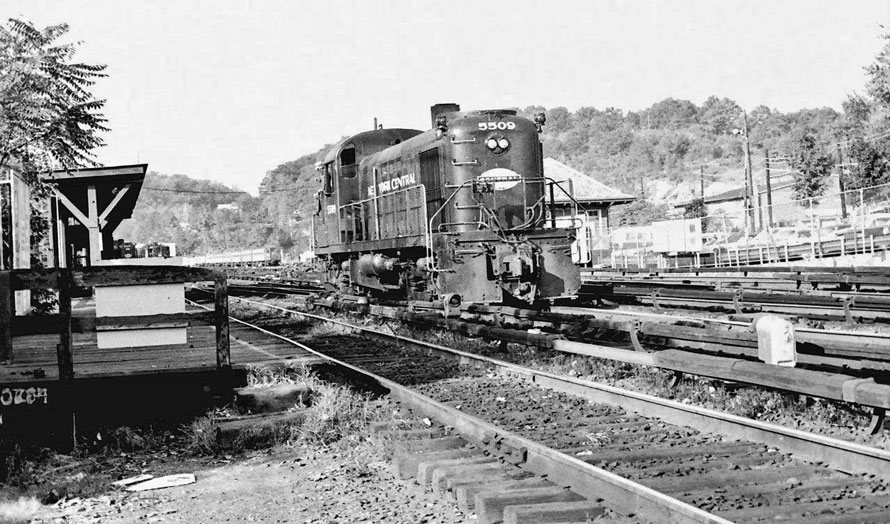
Sometimes my dad worked NW on a Sunday, so I could go with him then, too. Things were almost the same as on Saturdays, except that the eastbound from Brewster would have some extra cars as travel late on Sundays was heavy with people going back into the city. He also had two more trains, JNDO that ran from Brewster to the Westside Yard. It was always called “The Dog.” As I recall, it did not always stop at NW on Sundays, but did during the week to make a pick up. They made a drop on the way back for the local that ran during the week out of NW and went east. As far back as I can remember, the engineer on The Dog was Earl Stein, a very large man who always blew the horn and gave us a big wave coming east. During late summer he would stop at the tower and give my dad a bag of fresh vegetables. My dad always gave the crew any type of move they needed.
The next added train on Sundays was No. 955 from Chatham. The engineer on that job was Ray Hart, who befriended me and would let me ride with him anytime I wanted. I’ll save that for another story. Another wonderful engineer I rode with all the time is Bobby Palmer. I am happy to say he made trips with me on Amtrak as well as to my new railroad home, the Railroad Museum of New England. I will write about Bobby another time.
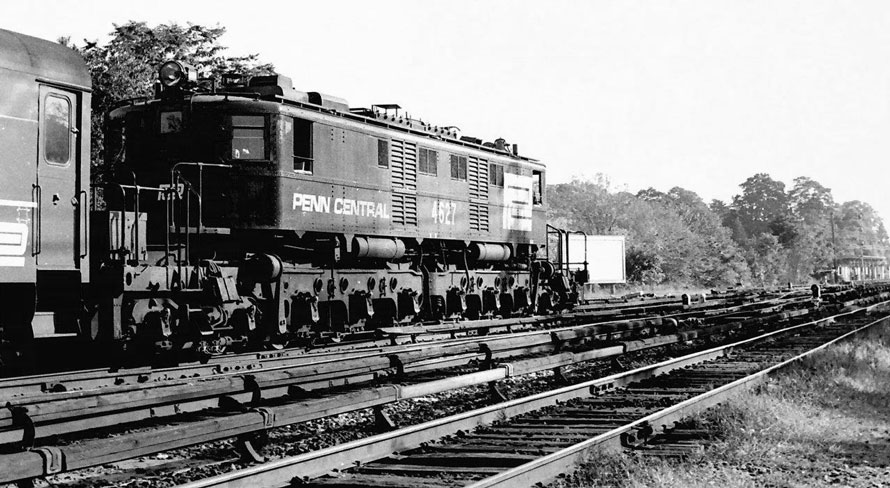
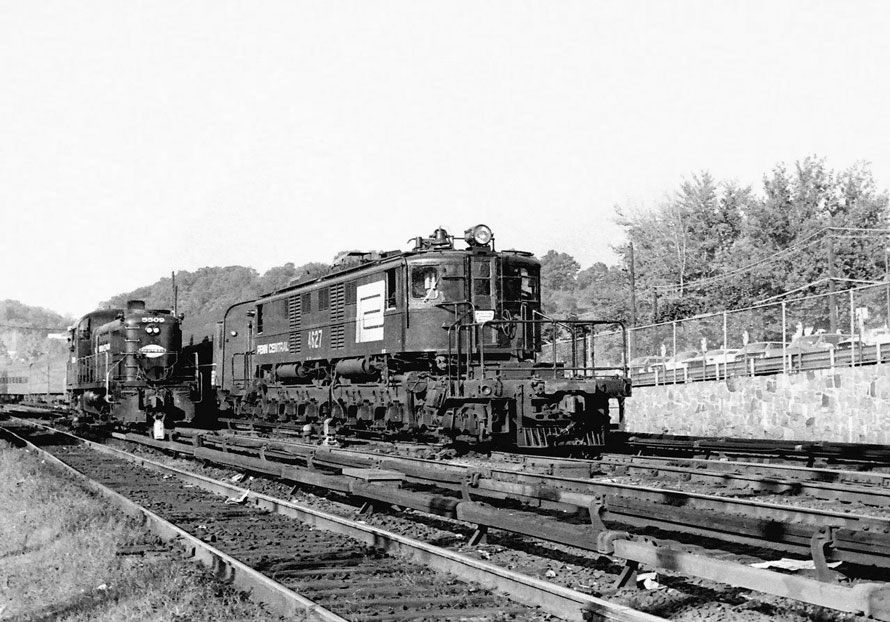
Yes, those days at NW were wonderful times for me, and I met many great guys. Willy Knowles was the afternoon dispatcher. He and my family went way back as he was from Crestwood. “Young Jack,” he would call me when I OSed the trains. Jimmy Hall was the conductor on the yard job, and he and his brakeman, Bobby Harmon, would tease my dad and tell him I did a better job than he did running the tower. Ernie Shoemocker was the yardmaster as was Willy Dolan the cat man. They knew me well and treated me as if I was running the place, but everyone knew that my father was sitting there watching every move I made. What I would not give to go back fifty years and do it all over again.
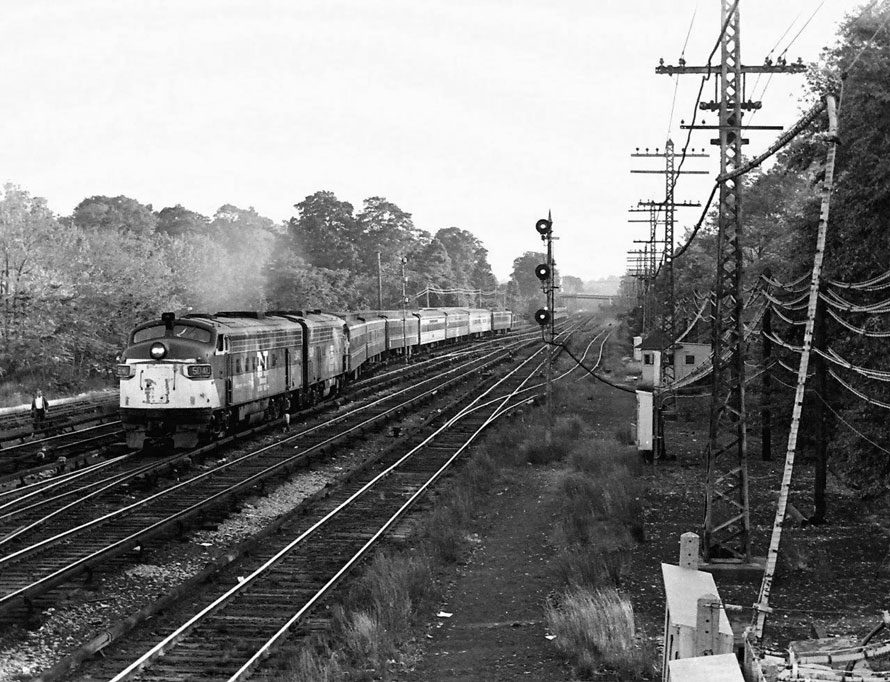
I hope you’ve enjoyed reading this. I am not a writer, just a story teller, sharing my life as a kid growing up on the New York Central Railroad with my dad.
Note: All photographs date from the mid 1960s to around 1970)
John Springer – Photographs and text Copyright 2018
John, nicely done. Ray Hart seems to always show up in stories about the Upper Harlem. Regards, Dave Saums.
Thank you John for another wonderful story of your youth on the NYC!
Larry Faulkner
Very wonderful story. Keep them coming. I love railroading in the 40s,50s, early 60s, and even though I have never been East (I live in California) NYC was always one of my favorite roads. thanks again!
Thanks for telling your story
John, fabulous story about how things were fifty years ago. Today’s commuter (who was not born when you were in NW running the place) has no comprehension as he rides on third rail all the way to Southeast, high level platform included. Thanks for sharing!
You’re a story teller, and that makes you a good writer. More, please! 🙂
I worked the CPR grain trains coming into Thunderbay to offload to the ships that gathered there for that. This was early 1970s and so the box cars they were still using had the old flat bearing trucks and so they needed oiling every time they stopped long enough to do so. We did two one hundred car trains a shift when they came into the T Bay. We inspected each car and chalked on the side whatever damage or worn brakes or broken springs that were apparent. Oiled and bled the air brakes off and moved on to the next car. After that inspection out on the speeder we went fixing and tuning up the old box cars. I remember one night working the midnite shift going out in the hump yard to find a car and way in the center of the yard I come across a man laying across the rails passed out. He was a little Philipino fella who was trying to get back to his ship parked at one of the grain elevators somewhere and being dopey on potent Canadian beer he was in great danger as the trains moved about considerably at all times of the day or night. Anyway I picked him up and helped him to the hump yard office by which time he was coming around pretty good. he spoke no English and was very happy to have not been run over and tried to give me his watch which I didn’t want. I was just happy he didn’t wind up in two pieces for some yard guy to find in daylight. I remember one time walking middle of the night between two long parked trains with an empty track between them. Walking alone back towards the office and dead quiet no wind and I detected this breeze coming from behind me. This made me turn around and look and there was coming the tail end of a train backing down toward me and was almost on me when I detected the air movment from the boxcar pushing down between the trains. That was a close one for sure… Then there was the time… oh wait, somebody elses turn.
You tell a fine story, Mr. Springer, and I look forward to many more!
North and south the Harlem line .not east and west. So annoying.
Great story and pictures, John
Dan Maners
Thank you for these wonderful memories, my dad was a conductor during this time period. I know the men you speak of in your article. I rode with my dad on the Harlem line many times. I sure do miss him and those trips.